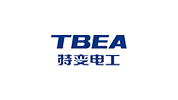Billing Management System
Solve complecity with intelligence
Experience in serving various industries Can satisfy all settlement requrements
Flexible rules and orderly order
A comprehensive billing and settlement system that includes the definition of accounting subjects, including quotation, fee collection, settlement, accounting, warning, and analysis. Each link can be expanded, defined, and combined, allowing for easy response to complex needs.
Features
Consistent accounting subjects
Built in standard accounting subjects. You can also choose to synchronize accounts from the financial system to achieve consistency between the billing and settlement system and the financial system.
Any extended document
Business documents (such as orders and quotations) can be extended to any field, and their display/hide, mandatory/optional control, and search support can be defined.
Flexible defined billing
Multiple subjects can be selected for a certain quotation and corresponding calculation logic can be specified; By combining extended fields and algorithm support, almost any complex cost logic can be accurately calculated.
Differentiated pricing policy
Differentiated pricing policies can be set based on various factors such as customers, business locations, routes, goods, and any combination of dozens of factors.
Trusted online reconciliation
Generate a statement with one click and generate a trusted statement for both parties based on digital signature technology. From business documents, electronic bills to online payments, achieve true electronic settlement.
Safe and convenient payment
Connected to various mainstream online payment products, it can achieve batch settlement, automatic verification, and automatic generation of accounting vouchers.
Discover how the BMS works
Source of business documents
For Billing Management Systems (BMS), business documents are primarily categorized into three types:
Business documents that record supply chain activities such as sales, procurement, warehousing, transportation, etc. These are typically recorded as the primary operating revenues or costs of the business.
Reimbursements and loans arising from daily operations, encompassing expenses like vehicle repairs, maintenance, and regulatory fees.
Fixed assets acquired by the enterprise, including vehicles, equipment, and other long-term tangible assets.
Rule based automatic billing
This is indeed a complex yet pivotal topic requiring comprehensive considerations of the following possibilities:
1. Specific Composition of Various Quotation Sheets: Taking the quotation sheet for freight services as an example, besides transportation fees, it may also encompass packaging fees, loading and unloading charges, installation fees, among others. Importantly, the required fee composition can vary significantly across different quotation sheets.
2. Calculation Methods for Diverse Billing Items: Some fees may be calculated based on the volume of goods, while others may adopt a fixed fee approach. As such, each billing item appearing on a quotation sheet necessitates a precise calculation formula.
3. Differentiated Pricing Policies: Even when dealing with quotation sheets of the same format, differentiated pricing policies often apply to various scenarios. For instance, there could be discrepancies between Customer A and Customer B, or between the eastern and western regions of a country, among other factors. These variations ensure tailored pricing strategies that cater to the unique needs and characteristics of each situation.
Generate accurate electronic bills
Even after achieving accurate billing, we must also consider whether each business transaction is to be paid in multiple stages, along with the billing dates, payment ratios, and payment methods (cash or bank acceptance drafts) for each stage. Regarding billing dates, there are various scenarios: some may use the date of business occurrence as the starting point, while others may opt for the completion of mutual account reconciliation. To address these uncertainties, a high degree of configurability should be implemented. This ensures that the system can adapt to diverse business requirements and processes, providing flexibility and efficiency in managing billing and payment schedules.
Collaboration between business and finance departments
The business department is responsible for confirming whether the corresponding services have been fully performed in accordance with the contractual agreements. In cases of cargo damage or delay, they need to collaborate with partners to confirm compensation and subsequent arrangements. Based on the confirmed business facts, the finance department will conduct approval and control over payments. From the inception of a business transaction to its final settlement, numerous departments and positions work collaboratively, adhering to the company’s process control standards. This ensures a seamless and compliant flow of operations, ensuring that all aspects of the business are managed efficiently and effectively.
Reconciliation between enterprises
In most cases, suppliers (service providers or carriers) compile business transactions from the most recent billing cycle and submit reconciliation requests to customers. However, often a single detail discrepancy can lead to the need for both parties to reinitiate the reconciliation process, resulting in significant additional effort for both sides. The BMS system addresses this issue by enabling the one-click generation of reconciliation statements for specific periods, eliminating the potential errors associated with manual document collection. Furthermore, both parties can confirm electronic reconciliation statements online, significantly enhancing the accuracy of the reconciliation process and drastically reducing labor costs.
Issuing invoices and receiving payments
Based on the reconciliation statement, suppliers issue invoices, which customers then register. During the invoice registration process, OCR (Optical Character Recognition) technology is automatically employed to recognize the information from invoice images, streamlining the data entry process. Additionally, the option exists to integrate with a banking payment system or the company’s existing financial management system, enabling a seamless end-to-end process for billing, invoicing, and payment transactions.
Profit and loss management
The cash inflows and outflows based solely on supply chain operations do not fully reflect a company’s true operating conditions. It is also crucial to consider factors such as fixed costs, asset depreciation, and many others. Through our profit and loss management module, every revenue and cost is accurately recorded into the corresponding accounting subjects and financial months. More importantly, our profit and loss management module empowers clients to observe business status and trends from both a financial and operational perspective, offering a holistic view of their business performance.
Analysis of Revenue, Cost, and Profit
By conducting a thorough analysis of gross margins at the business level, we can accurately assess the profitability of individual products or services, providing solid data support for optimizing product mixes and enhancing pricing strategies. Furthermore, leveraging our advanced profit and loss management module for profit margin analysis delves deeper into the impact of cost structures on profits. Carefully crafted business performance analysis reports, incorporating both financial and operational perspectives, present a comprehensive view to decision-makers, encompassing both macro and micro, rational and intuitive insights into the company’s financial status and operational outcomes.
Our Customers
They achieved the goals successfully by using the digital solution of Niuinfo.
You can contact online customer service
or call our service hotline to obtain a solution and schedule a product demonstration
(+86)400-006-2587 / service@niuinfo.com
09:00-18:00, Shanghai/Asia Time Zone
























